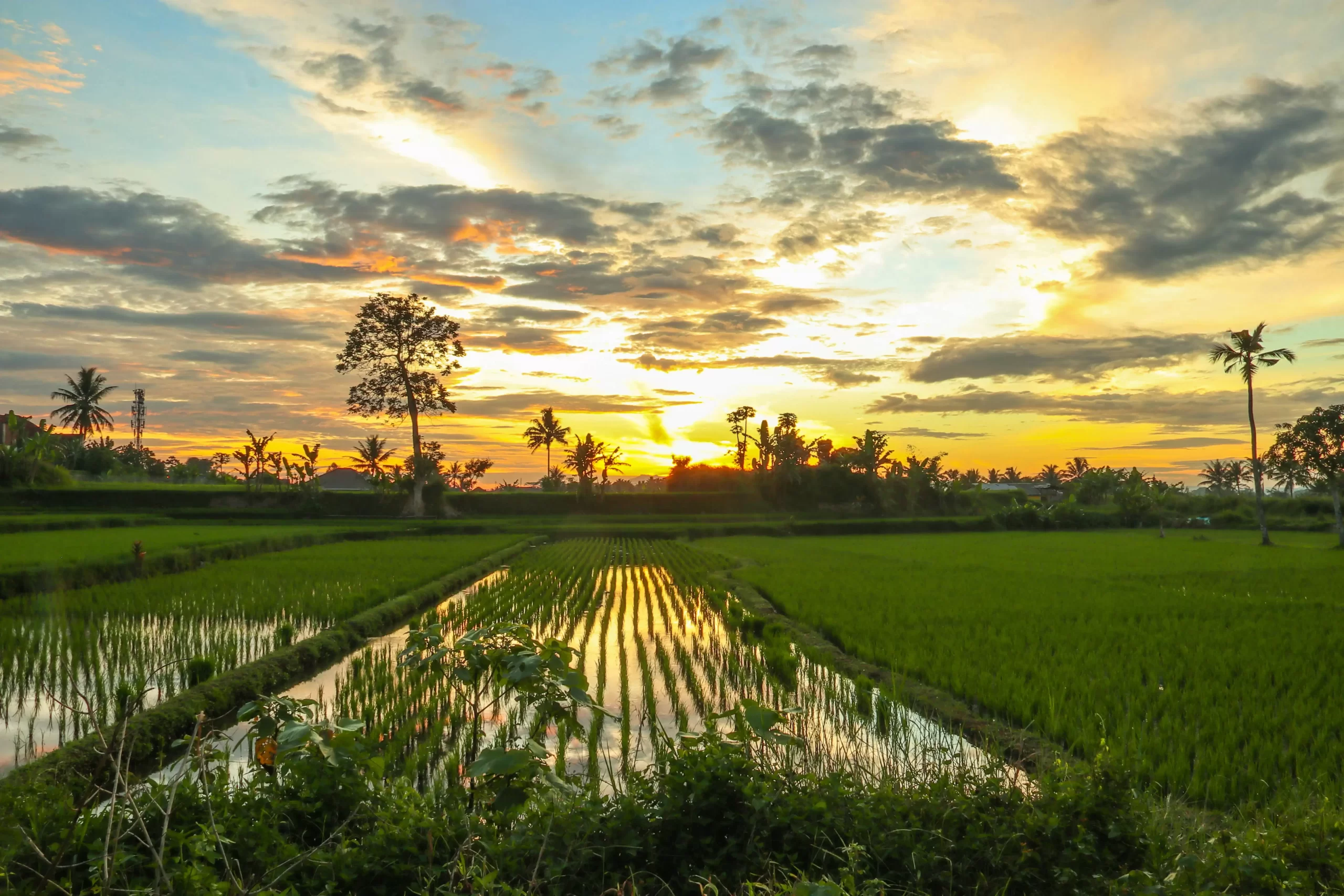Agriculture is one of the most important sectors globally, providing food security and supporting livelihoods. With climate change and environmental sustainability becoming critical global concerns, innovative solutions are needed to improve agricultural practices. One such practice, particularly used in rice farming, is the Alternate Wetting and Drying (AWD) technique. Monitoring these fields to ensure optimal water management is essential, and that’s where Synthetic Aperture Radar (SAR) satellites come into play.
In this article, we will explore how SAR satellite technology is revolutionizing the way rice fields are monitored, specifically how it helps penetrate dense cloud cover to monitor fields that use the AWD technique. Let’s dive into the fascinating world of remote sensing, sustainable agriculture, and SAR satellite technology.
Understanding the Alternate Wetting and Drying (AWD) Technique
Before we dive into satellite technology, it’s important to understand what AWD is and why it matters for rice farming.
Alternate Wetting and Drying is a water-saving practice used in irrigated rice fields. Farmers allow the rice fields to dry out for a certain period between irrigation cycles, rather than keeping the fields continuously flooded. This practice has multiple benefits, such as:
- Water conservation: By reducing the amount of water needed for irrigation.
- Lower methane emissions: As drying periods lower the methane-producing anaerobic conditions in the soil.
- Increased soil health: By alternating wet and dry phases, the practice promotes better root growth and nutrient uptake.
However, AWD requires careful monitoring to ensure that the drying periods don’t become too long, which could harm the rice plants, and that the water management aligns with sustainable farming practices.
That’s where satellite technology, specifically SAR, comes into play.

What is Synthetic Aperture Radar (SAR)?
Synthetic Aperture Radar (SAR) is a form of radar that can create high-resolution images of the Earth’s surface. It is particularly powerful because it can operate day and night, and more importantly, it can penetrate through clouds, fog, rain, and even some vegetation. This makes SAR highly valuable for agricultural monitoring, where weather conditions and natural obstacles could otherwise hinder data collection.
SAR technology works by sending out microwave signals to the Earth’s surface. These signals bounce back to the satellite, which measures the time it takes for the signal to return and the strength of the return signal. By analyzing this data, SAR satellites can generate detailed images of the land surface, detect moisture levels, and even monitor changes in crop growth over time.
How Do SAR Satellites Penetrate Dense Clouds?
A key advantage of SAR technology is its ability to penetrate dense clouds. Unlike optical satellites, which rely on visible light, SAR satellites use microwave signals that have much longer wavelengths. These microwaves can pass through clouds, fog, and other atmospheric obstructions without losing much signal strength.
Here’s how it works:
- Long Wavelengths: The long wavelengths of microwaves (compared to visible light) allow them to pass through cloud particles and reach the ground.
- Active Imaging: SAR is an “active” remote sensing system, meaning it generates its own energy (microwave pulses) to illuminate the target and collect information. This is different from optical satellites that rely on sunlight, which can be blocked by clouds.
- Cloud and Weather Immunity: Because SAR does not depend on visible light or weather conditions, it can collect data regardless of the time of day or weather, making it particularly effective in regions with frequent cloud cover, such as Southeast Asia.
SAR in Action: Monitoring Rice Fields Using AWD
In rice farming, water management is crucial for crop growth and sustainability. AWD fields need regular monitoring to ensure the correct water levels are maintained, and SAR satellites are uniquely suited for this task.
Here’s how SAR can monitor AWD rice fields:
1. Water Level Monitoring
SAR satellites can detect the moisture content in the soil, which helps farmers and researchers understand the water levels in their fields. In AWD farming, this capability is essential because farmers need to manage irrigation cycles carefully. SAR can differentiate between flooded and dry field conditions, making it easy to track the wetting and drying phases of AWD.
2. Detecting Vegetation Growth
Another important aspect of AWD farming is understanding how rice crops are growing during the dry phases. SAR satellites can measure the structure of vegetation, allowing farmers to track crop development. By regularly capturing data, SAR satellites help monitor changes in rice plant growth and health throughout the growing season.
3. Soil Moisture Analysis
SAR is sensitive to changes in soil moisture, providing accurate data on how much water is retained in the fields after each irrigation cycle. This is especially useful in AWD because the technique relies on allowing fields to dry out between irrigations without risking the health of the plants. SAR can give near-real-time data, enabling farmers to make informed irrigation decisions.
4. Early Warning Systems
SAR technology can also support early warning systems for issues like droughts or excessive soil drying. By providing frequent, consistent data on field conditions, SAR can alert farmers when fields need more water or when irrigation practices should be adjusted.

The Benefits of Using SAR to Monitor AWD Rice Fields
The use of SAR satellite technology in rice farming, particularly with the AWD technique, has several benefits:
- All-weather monitoring: SAR can collect data even during the rainy season, ensuring that rice fields are monitored consistently throughout the growing season.
- High-resolution imaging: SAR’s ability to create detailed images allows for precise monitoring of rice paddies, making it easier to track the effectiveness of AWD practices.
- Cost-effective: By reducing the need for on-the-ground monitoring, SAR technology can save farmers and agricultural researchers both time and money.
- Sustainability insights: SAR data can be used to ensure that AWD practices are being followed correctly, leading to more sustainable farming methods and reduced environmental impact.
The Future of SAR in Sustainable Agriculture
As sustainable farming practices like AWD gain traction, the role of SAR technology in agriculture will continue to grow. The ability to monitor fields remotely and accurately, even in challenging weather conditions, will help farmers improve their water management, reduce methane emissions, and increase crop yields.
Beyond rice farming, SAR satellites have the potential to revolutionize agricultural monitoring across the globe. From tracking soil moisture to assessing crop health, SAR technology is paving the way for smarter, more sustainable farming practices.
Conclusion
The combination of Synthetic Aperture Radar (SAR) technology and the Alternate Wetting and Drying (AWD) technique in rice farming is a powerful step towards sustainable agriculture. With SAR satellites’ ability to penetrate dense clouds and monitor fields in all weather conditions, farmers and researchers have access to real-time, accurate data that helps optimize water usage and crop management. As the world looks for innovative solutions to address climate change and resource conservation, SAR technology will continue to play a vital role in ensuring food security and environmental sustainability.
References
- Aidash, 2024. Synthetic Aperture Radar: The hero tool for remote sensing. Available at: https://www.aidash.com/synthetic-aperture-radar-the-hero-tool-for-remote-sensing/.
- Almeida-Ferreira, A.C. et al., 1996. The Use of SAR Data for Rice Crop Monitoring: A Case Study of Mekong River Delta, Vietnam. ADSABS. Available at: https://adsabs.harvard.edu/full/1996ESASP.383…21A.
- ASF, 2024. What is SAR? ASF. Available at: https://asf.alaska.edu/uncategorized/what-is-sar/.
- Core.ac.uk, 2024. The Use of SAR Data for Rice Crop Monitoring: A Case Study of Mekong River Delta-Vietnam. Available at: https://core.ac.uk/download/pdf/11037180.pdf.
- CSIS, 2024. Applications of Synthetic Aperture Radar Satellites for Environmental Monitoring. Strategic Technologies Blog. Available at: https://www.csis.org/blogs/strategic-technologies-blog/applications-synthetic-aperture-radar-satellites-environmental.
- Earthdata.nasa.gov, 2024. What is SAR? Earthdata. Available at: https://www.earthdata.nasa.gov/learn/backgrounders/what-is-sar.
- EUSpaceImaging, 2024. What is SAR imagery? Available at: https://www.euspaceimaging.com/blog/2024/04/05/what-is-sar-imagery/.
- FasterCapital, 2024. Advantages of SAR image classification over optical imagery. Available at: https://fastercapital.com/topics/advantages-of-sar-image-classification-over-optical-imagery.html.
- Geoawesomeness, 2024. Everything you ever wanted to know about SAR satellite data and the ecosystem but were afraid to ask. Available at: https://geoawesome.com/eo-hub/everything-you-ever-wanted-to-know-about-sar-satellite-data-and-the-ecosystem-but-were-afraid-to-ask/.
- Hal.science, 2018. Advanced Methods for SAR Data in Rice Crop Monitoring. Theses. Available at: https://theses.hal.science/tel-02450835/file/2018tou3028bis.pdf.
- ICEYE, 2024. Satellite data. Available at: https://www.iceye.com/satellite-data.
- Jouav, 2024. What is SAR? Available at: https://www.jouav.com/blog/what-is-sar.html.
- Koreascience, 1999. SAR for Agricultural Monitoring. Koreascience. Available at: https://koreascience.kr/article/CFKO199911921231992.pdf.
- MDPI, 2021. The use of SAR for Rice Crop Monitoring. MDPI. Available at: https://www.mdpi.com/2072-4292/13/1/103.
- MDPI, 2024. Advanced SAR Techniques for Rice Monitoring. MDPI. Available at: https://www.mdpi.com/2072-4292/14/14/3254.
- Studysmarter, 2024. Synthetic Aperture Radar. Studysmarter. Available at: https://www.studysmarter.co.uk/explanations/engineering/aerospace-engineering/synthetic-aperture-radar/.
- UP42, 2024. SAR data as complementary to optical imagery. UP42. Available at: https://up42.com/blog/sar-data-complementary-optical.
- VNU Journal of Science, 2024. The Role of SAR in Rice Crop Monitoring in the Mekong Delta. VNU Journal of Science: Earth and Environmental Sciences, 36(2). Available at: https://js.vnu.edu.vn/EES/article/view/4635.
About GreenUP
Pioneering the Green Transition with Expertise and Innovation. With over 10 million I-RECs issued since 2019, we are Vietnam’s leaders in renewable energy certification. Our comprehensive suite of services, positions us uniquely as a one-stop solution for all your green and ESG needs. Experience unparalleled market access, competitive pricing, and strategic partnerships that drive not only cost savings but also significant value to your sustainability goals.







